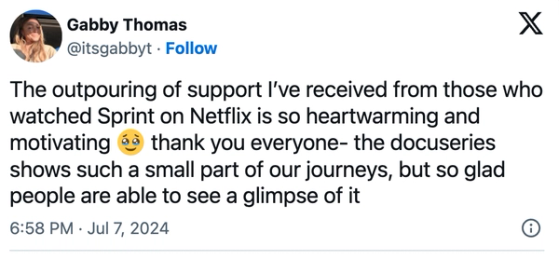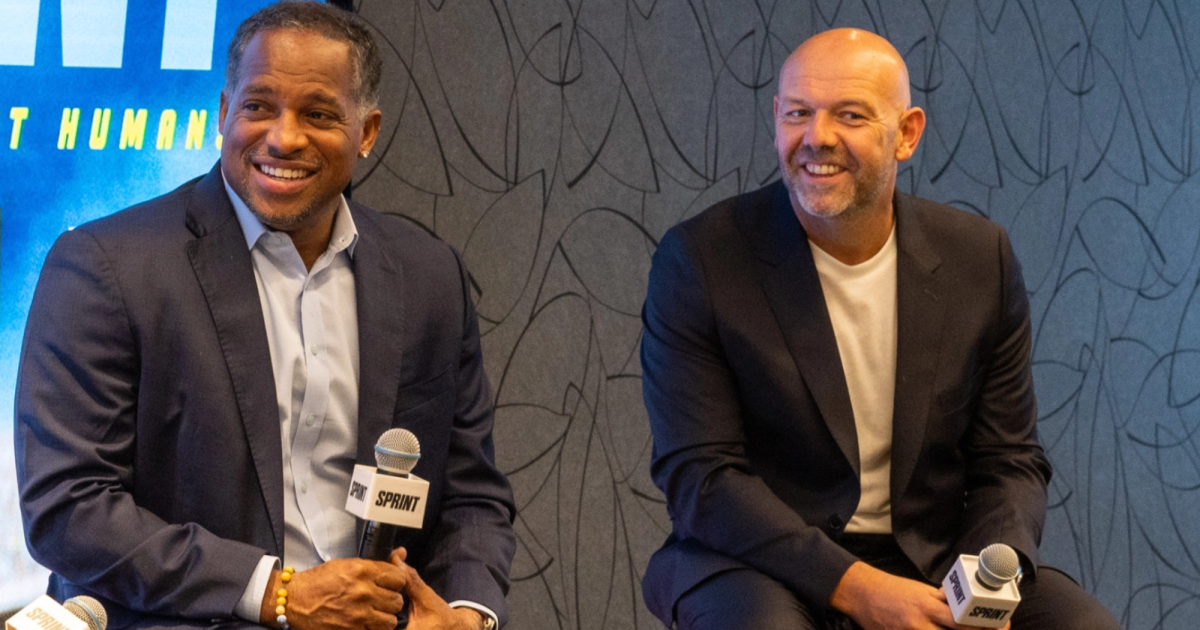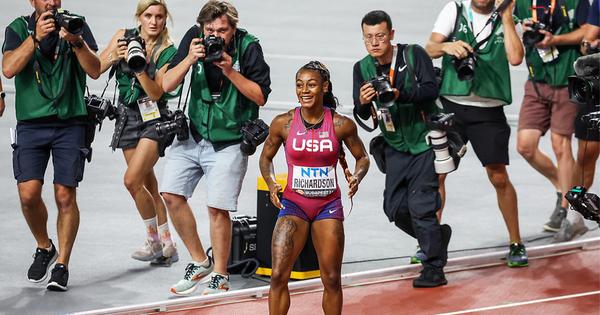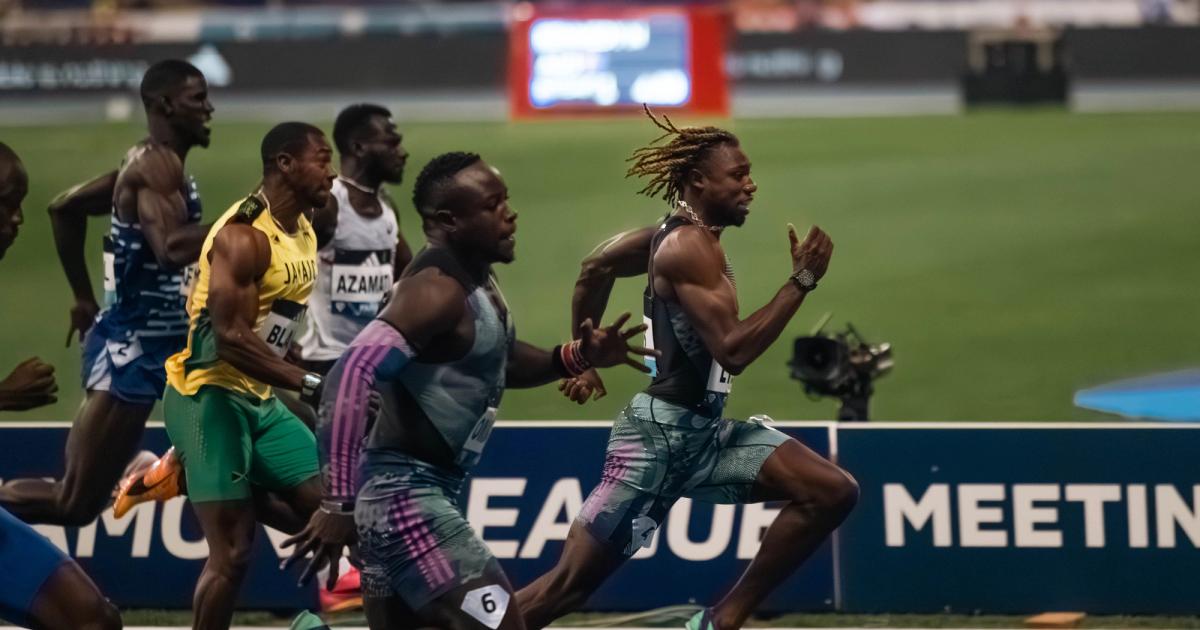By David Melly
July 10, 2024
Well, it’s been one week since SPRINT, the Netflix documentary following the sport’s biggest 100-meter stars, premiered on the streaming service, and the results are in: every single track athlete now receives the same salary as Max Verstappen, every SportsCenter segment leads with discus and 10k highlights, and Chris Chavez is more influential over American culture than Roger Goodell.
Or maybe not. But it sure seems like some track and field fans were under the impression that SPRINT would transform the sport overnight into a global money-maker, and that any impact less than track and field immediately becoming the new Formula 1 is a sign of failure. The reactions from featured athletes have been mixed. Fred Kerley doesn’t seem to be much of a fan of his edit and Gabby Thomas diplomatically commented that the doc “shows such a small part of our journeys,” while others have been silent one way or another.

Generally speaking, the subjects of a documentary not being thrilled with the final product is a good sign that the portrayal is honest, rather than sycophantic or deferential. A good documentary portrays its subjects as they are: complex, flawed, passionate, sensitive… human. Stories also need heroes and villains, even if that storytelling is rooted in reality – just ask any Real Housewife or Survivor contestant.
Another common criticism was that the show focused too much – or not enough – on some athletes compared to others. Here, production considerations have to be given a little credit. How much footage, access, and time you have is as critical to building six episodes’ worth of story as who’s the most interesting. The best example of this comes from the cycling world, where two-time defending Tour de France champion Tadej Pogacar was conspicuously absent from the first season of Unchained because his team didn’t want to participate (they signed on for the second season after the show’s success – take notes, track fans!). So if your big complaint is that SPRINT didn’t feature your particular fave heavily enough, keep in mind that they might have said no, or been unavailable, or – let’s be honest here – simply been boring when the cameras turned on.
The Netflix viewer base is also newer and far less informed than the average Diamond League viewer or TLC subscriber. So if your big critique of the show is “Enough already with this Noah Lyles guy!”, keep in mind that the numbers still tell us that more people’s favorite track and field star is a two-time Bachelorette contestant than a three-time World champ. The whole point of the show is to introduce a couple million new people to the athletes we already have a lot of strong feelings about and induce them to feel strongly as well.
Ultimately, the biggest Achilles heel of SPRINT is a pre-existing problem not of its own making: It can be really hard to follow track. Unlike the NFL, we don’t have sixteen weekends in a row where you’re guaranteed to see your favorite athlete compete. There isn’t one set of competitions you must enter to qualify for the World Championships. And there’s no guarantee that the best runners in the world will show up to the same place at the same time more than once a year – and even then it’s not a sure thing.
So the filmmakers are forced to build a season-long narrative from a smorgasbord of practice footage, press conferences, and meets (if you can even obtain race video!) from wildly different times and places and present it as a linear storyline… And then dumb it down so someone who’s never watched a track meet before can understand what the heck is going on.
But here’s the silver lining: SPRINT is introducing the world to some of track’s biggest names right before they all get on everyone’s television for the 2024 Olympics. The challenge in track and field has never been getting people to watch Sha’Carri Richardson run the Olympic final; it’s getting them to care about Sha’Carri Richardson the day before and the day after.
Worst case scenario, we have a few more casual sports fans tuning into track during the Olympics with a sense of “oh yeah, I’ve heard of that person and they seem pretty cool.” Best case scenario we get the full F1 effect, and the next time you’re at the bar, people all around you are animatedly passing off talking points from SPRINT to their friends and dates, as if they were their own.
Either way, with season two already on the way, people’s budding interest – no matter how deep – will be quickly reinforced. SPRINT won’t change the world overnight. But it’s well-timed and well-framed to make a lasting impact on a sport that badly needs the boost.
-
For more of our thoughts on SPRINT, listen to this week’s episode of The CITIUS MAG Podcast. Discussion starts at the 34:33.

David Melly
David began contributing to CITIUS in 2018, and quickly cemented himself as an integral part of the team thanks to his quick wit, hot takes, undying love for the sport and willingness to get yelled at online.




